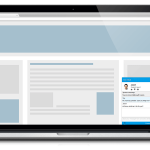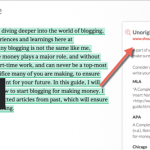Why Web Design and Front-End Development Need Each Other
As the design is taking more and more of a leading role in the digital industry, especially in terms of website creation, the need for web design and development services is becoming more and more significant by the day and working with the best web development agency that your company can get is crucial. Without this aid, web design teams end up having issues with both time and hands. More and more companies are hiring freelancers for extra help as a result.
Modern web design teams rarely have trouble with workers spread all over the world, living across many different time zones. Even so, it is still a challenge to find ideal employees. Considering these difficulties, famous design companies must overcome unexpected and unconventional obstacles to land top talent.
In this brief guide, we are going to look at why web designers must learn front-end development, and we’ll suggest the best way to do this. We hope that you will have a much better idea of the challenges you face and how you can handle them to find the best web designers and developers. This can ultimately help your company soar above and beyond your competitors in today’s harsh market conditions for the web design industry.
For years now, there has been seemingly endless debate about whether or not web designers need to learn front-end development. Astonishingly, even today, it’s still possible to see web designers designing websites in Photoshop. Web design is an entirely different beast from graphic design. To understand the nuances and subtleties of design for the web, you need to know how the web works – both its basic building blocks and its architecture. And this is where front-end development comes in.
Defining Front-End Development
The front-end of a web page is the part that users see and interact with. It includes a user interface, text, images, animation, and all other content. Front-end development is about how these elements are coded and presented to the end-user. Back-end developers deal with everything behind-the-scenes, such as how and where content is stored, managing databases, and more.
Photoshop allows one to create a static mockup of the site. Front-end developers are the ones that bring the design to life, using code. Front-end development often uses the following three languages:
- CSS (Cascading Style Sheets) sets up the styling information, such as the layout, fonts, widths, and more.
- HTML (HyperText Markup Language) provides the overall framework for the page, the basic structure, what content should be where, how to upload it, etc.
- JavaScript creates the webpage’s dynamic and interactive elements, such as forms, for example.
For someone new to programming, this may seem a bit daunting at first. However, with the right support and tools, this can all be learned quickly enough. If you still need some motivation to start learning front-end development, here’s how it can help you improve your designs and your employability.
What’s Useful in Front-End Development for Web Designers
If you are a web designer, you don’t need to be an expert in every front-end language. Understanding the architecture of how they work together, and knowing enough code to put together simple web pages can help you drastically improve the quality of your web designs, and your overall ability to deliver a finished product.
Better Workflow Understanding Means Better Designs
Chances are you’ve had a design sent back from the developers saying that the PSDs and mockups can’t be translated into code. We all know how frustrating that is. When you understand the technology behind how the web works, i.e., how CSS, HTML, and JavaScript come together to bring your design to life, it empowers you to create better designs for the web. You won’t have to face awkward situations answering to your boss or arguing with a developer about why they cannot design your code.
More Control Over the Design Application
To take it a step further, when you understand how your design translates to code, you can have better control of it. Depending on your proficiency level, you’ll either be able to code it yourself or be able to have a more meaningful discussion with the developer and tell them exactly how you want it done – using front-end terminology.
Better Turnaround Times on Your Projects
Learning to code the front-end can also drastically improve the turnaround time on your projects – in proportion to the project’s size and your coding skills. On small projects like a personal website with only 3-4 pages, you could consider coding it yourself once you’ve achieved a certain level of proficiency. It works well for freelance web designers or small agencies that don’t want to bring in another person for front-end development on each project.
Alternatively, for larger projects beyond your new-found coding skills, the understanding of CSS, HTML, and JavaScript will help you come up with more developer-friendly designs, and in fact, communicate way better with the front-end developer.
More Clients, More Jobs
For freelance web designers, one constant bone of contention is that the best projects often go to agencies. Clients also don’t want to look for a developer to code it. One of the best strategies for freelance web designers to take on creative agencies is to offer more holistic and consolidated services. Building up your coding skills to the extent you can provide live websites to clients will help you bag more clients and, eventually, a more significant chunk of the pie.
For those who prefer working in an agency or a web development firm, expanding your skillset opens up more job opportunities. Many small firms prefer to have people with many talents on board who have more than one narrow skillset to offer.
Conclusion
As a web designer, you don’t need to be an expert front-end developer (unless you want to be!). But learning essential front-end coding skills can help up your game and launch you into an entirely different league altogether.
Although it might take some time for you or your employees to get around with front-end development techniques, it is a worthwhile investment both in time and money. Considering the highly competitive conditions of today’s market, you always want to be one step ahead of your competitors. And if your web design agency’s team has web designers that understand front-end development and know-how to bring the design and development processes together in the most effective way possible, you’ll surely have a massive advantage over your competitors.









![Web App Development Guide: How to Select the Best Tech Stack? [Infographic]](https://technofaq.org/wp-content/uploads/2019/05/Web-App-Development-infographic-150x150.jpg)






